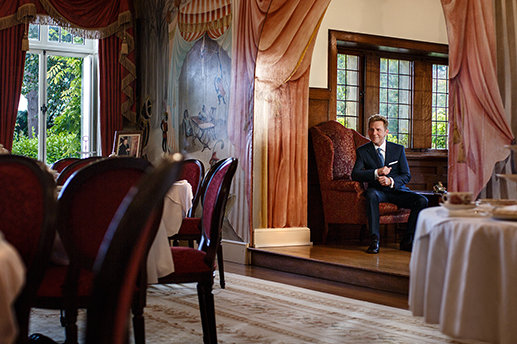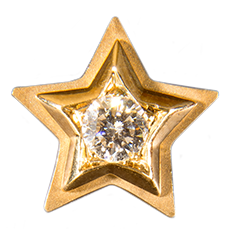Born in 1960, David Miscavige has been a Scientologist for most of his life. He is still remembered as the 12-year-old prodigy who arrived at Saint Hill in Sussex, England. Saint Hill was L. Ron Hubbard’s home from 1959 to 1966, the place where he researched and formulated his pioneering work on the mind and spirit, and the training center for the religion. It was in that setting—hallowed among Scientologists—that David Miscavige turned heads, serving as the youngest professional auditor at Saint Hill’s famed Hubbard Guidance Center in England.
Barely a year after entering the Sea Organization—the religious order of Scientology—at the age of 16, he was among a handful of people selected to work directly with L. Ron Hubbard. Recognizing the 17-year-old’s abilities, Mr. Hubbard appointed David Miscavige Director of Photography for the original Scientology training films.
Soon after, at Mr. Hubbard’s request, Mr. Miscavige served as Action Chief, the senior executive supervising projects involving Scientology Churches around the world. By age 18, David Miscavige had become the individual L. Ron Hubbard called upon to carry out his most important assignments. No executive in the Church’s history ever interacted more with L. Ron Hubbard than Mr. Miscavige. They were in constant communication.
In later years, L. Ron Hubbard described a heroic Church executive who identified and then cleared the ranks of rogue staff attempting to seize control of Scientology while Mr. Hubbard was engaged in intensive research and not directly involved in the day-to-day management of the Church.
When reflecting on what had nearly transpired, Mr. Hubbard stated:
“So forgive me for not managing the Church when it almost fell into hostile hands. It all came out all right. Why? Because real Scientologists made sure it did. My faith was justified.”
That “real Scientologist” L. Ron Hubbard spoke of was David Miscavige.

In 1982 Mr. Hubbard requested a corporate reorganization of the Church designed to ensure the Church and the religion could move on into perpetuity, always remaining true to its “Source” materials—the term for L. Ron Hubbard’s philosophy, policies and the fundamental theology of the religion. Thus, Mr. Hubbard established the Religious Technology Center to hold the Scientology and Dianetics trademarks and to preserve, maintain and protect the Scientology religion. He appointed Mr. Miscavige a Trustee of that Church organization.
Mr. Hubbard also appointed David Miscavige as chairman of the organization charged with overseeing and handling his personal affairs for the remainder of his life.
L. Ron Hubbard laid out in detail a blueprint for the future expansion of Scientology. He outlined projects he considered to be critical to that expansion, including authenticating and safeguarding all Source materials. He placed complete trust in David Miscavige, the longtime friend he had personally mentored, to carry out these projects and to continue to protect the Church.
Following L. Ron Hubbard’s passing in 1986, it was Mr. Miscavige who steered Scientology through many challenging times, for as history demonstrates, the true test of any religion is to survive the passing of its Founder. Indeed, it was Mr. Miscavige who secured that survival by obtaining full religious recognition in the United States and ushering Scientology onto the global stage.
Since then, Mr. David Miscavige has steadfastly carried forth L. Ron Hubbard’s legacy into the future and continues to realize his vision. As a result, Scientology now stands as the only major religion to emerge in the 20th century, growing faster than any other religion in the modern age.
Trust and friendship are things forged in fire and pounded out on the anvil of life. We have been through a lot together. I trust you as you trust me. L. Ron Hubbard to David Miscavige
STAR OF TRUST

In October of 1982, Mr. Hubbard bestowed the “Star of Trust” pin on David Miscavige. This honor is memorialized by a unique gold pin with a diamond in the center, and an identification card noting its importance. The recognition, L. Ron Hubbard wrote, was “inspired by the idea that a person with that pin and with that card could put a situation straight and would be believed over and above others pretending to so act.”
Mr. Hubbard further explained that the card and pin represent a person whom he knew from experience that, “I can trust without reservation.”
In presenting the Star of Trust to Mr. Miscavige, L. Ron Hubbard noted: “Trust and friendship are things forged in fire and pounded out on the anvil of life. We have been through a lot together. I trust you as you trust me.”
The inscription on the back of the card reads: “The person wearing this pin is speaking personally for L. Ron Hubbard.”
This public statement of trust was critically important because beginning in 1980, Mr. Hubbard began stepping back from public life in order to continue his research and writings. He entrusted David Miscavige to meet the demands of a growing church and movement that required steady, determined leadership.







